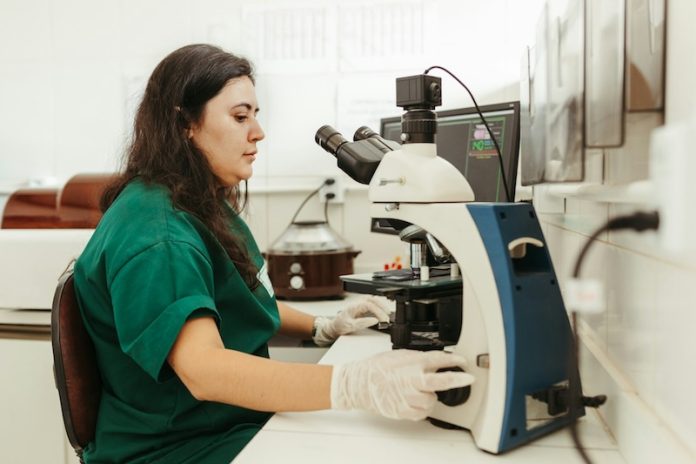
Pancreatic cancer (PC) remains one of the most lethal cancers worldwide, with only 13% of patients surviving more than five years after diagnosis.
In Ireland alone, there are around 900 new cases of PC annually, leading to over 800 deaths each year.
One of the biggest challenges is the lack of early detection, as the symptoms of early-stage pancreatic cancer are vague, often leading to diagnosis only when the disease is in an advanced, less treatable stage.
A new study led by researchers at Trinity College Dublin’s School of Medicine, under the direction of the Maher lab group, is taking a crucial step toward solving this issue.
The team is focusing on pancreatic cystic lesions (PCLs)—fluid-filled sacs in or on the pancreas—some of which have the potential to develop into pancreatic cancer.
Currently, it’s difficult for doctors to tell which PCLs are harmless and which are high-risk and likely to become cancerous. To address this, the Maher lab has developed a biomarker panel—a combination of measurable biological signals found in blood and cyst fluid—that shows high accuracy in distinguishing between low-risk and high-risk patients.
This panel includes proteins and genetic material that appear in different levels in patients depending on their risk level for developing pancreatic cancer. By detecting these biomarkers, the team hopes to catch the disease before it progresses, allowing for earlier, more effective treatment.
At present, there are several different international guidelines used by clinicians to assess a patient’s risk of developing PC based on symptoms and imaging. However, disagreement across these guidelines suggests that current risk assessment methods are inconsistent and potentially contributing to missed or late diagnoses.
This new biomarker panel could change that by offering a more objective, biology-based method of identifying high-risk patients—potentially reducing the number of patients who are under- or over-treated.
In addition to the promising biomarker panel, the researchers have released four large datasets related to their findings. These are now publicly available and can be combined to form a unique and powerful resource for further pancreatic cancer research.
Scientists around the world can now use this data to explore new treatment pathways, study the development of PCLs, or search for additional early warning signs of PC.
Dr. Laura Kane, senior author and a Research Ireland Postdoctoral Research Fellow, emphasized the potential of this breakthrough:
“Our hope is that with further development, this biomarker panel will enable us to effectively monitor high-risk patients, detect pancreatic cancer at an earlier stage, and therefore improve outcomes and survival rates for these patients.”
Professor Stephen Maher, who leads the research group, added that the goal is also to develop less invasive methods of patient surveillance. This would make routine monitoring easier and more comfortable for both patients and clinicians, a key factor in improving long-term care.
Dr. Kane has been awarded a 2-year fellowship to continue this vital work under Professor Maher’s mentorship. The team’s next steps will likely include validating the biomarker panel in a larger group of patients and developing tools to use it in clinical practice.
In a field where early detection can mean the difference between life and death, this research marks an important advancement—offering new hope for patients and clinicians in the fight against pancreatic cancer.
If you care about cancer, please read studies about vitamin D and bowel cancer, and a cautionary note about peanuts and cancer.
For more health information, please see recent studies about the link between ultra-processed foods and cancer, and everyday foods to ward off pancreatic cancer.
The research findings can be found in Scientific Reports.
Copyright © 2025 Knowridge Science Report. All rights reserved.



